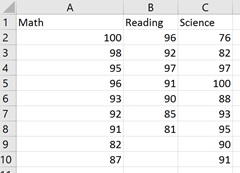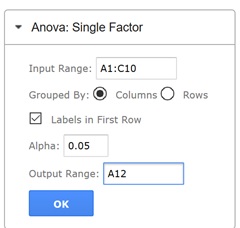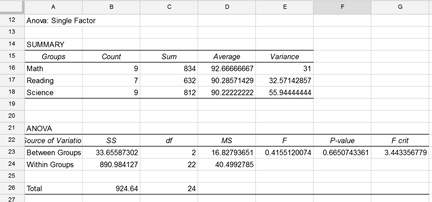Analysis of variance or ANOVA can be used to compare the means between two or more groups of values.
In the example below, three columns contain scores from three different types of standardized tests: math, reading, and science. We can test the null hypothesis that the means of each sample are equal against the alternative that not all the sample means are the same.

To perform a single factor ANOVA in Excel:
- On the XLMiner Analysis ToolPak pane, click Anova: Single Factor.
- Click the "Input Range" field, then enter A1:C10.
- Leave "Columns" selected for "Grouped By", since the data is grouped by column.
- Since the first row contains our column headings, select "Labels in First Row".
- Leave "Alpha" at the default of 0.05. This is the level of significance for the hypothesis test.
- Click the "Output Range" field and enter cell A12.
- Click OK.

The results are shown below.

Cells C16:E18 show various statistics of each group: Sum, Average, and Variance.
Cell F23 contains the p-value for the calculated value of F (in cell E24) found by the Analysis ToolPak. Notice that the p-value or probability of obtaining an F statistic of 3.44 or larger when the null hypothesis is true is .6650. Since the p-value is greater than the specified alpha of 0.05, the null hypothesis is accepted.
